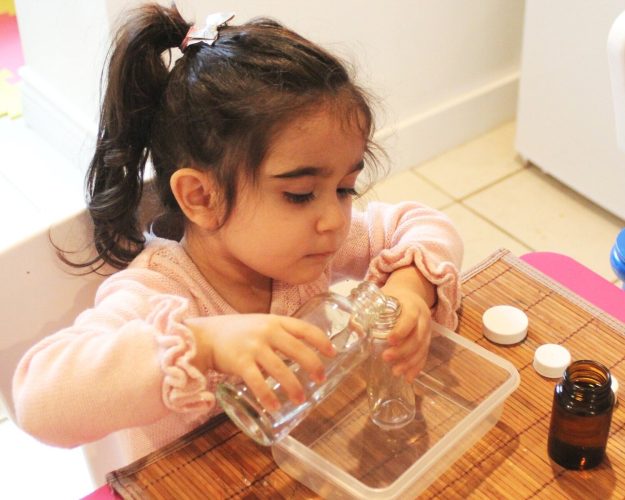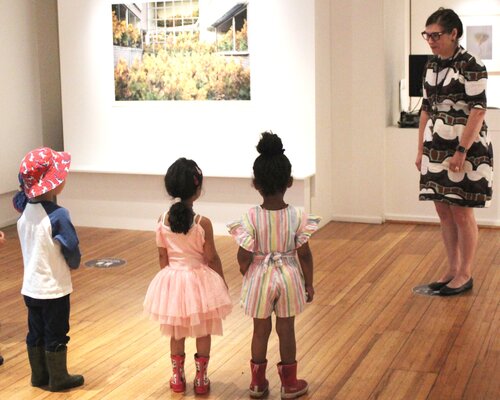The Five Montessori Areas

Practical Life
These activities focus on skills for everyday living, which hone fine and gross motor skills while developing concentration, social skills, and independence.
Tasks such as self-care (hygiene, getting dressed), environmental care (cleaning and maintaining common areas and personal spaces), courtesy and etiquette (greetings, manners for all occasions), and movement control (walking in a line) are valuable and preparatory for more complicated subjects.
Repetition is encouraged, and children enjoy this classroom area as it fosters a sense of accomplishment in doing grown-up tasks in a fun and rewarding manner.
Sensorial
This classroom area allows children to explore and refine the five senses via activities scientifically designed to bring clarity and order to the world around them.
Sensorial activities include individual exploration of concepts such as temperature, mass, size, proportion, taste, and smell. The tactile nature of this area allows children to become explorers of their environment, gaining skills required to assess and understand their personal space and larger surroundings.


Mathematics
Higher education processes and complex mathematical concepts are introduced when children are ready to advance.
Using concrete and tactical manipulative methods, we encourage children to learn to count, calculate basic functions and become numerically literate with a hands-on approach. In addition, the entire Montessori environment indirectly exposes children to math concepts in all other areas of the classroom.
As children progress, they are introduced to more abstract concepts like fractions and problem-solving, preparing them for more complex mathematics in the future.
Language
Speaking, reading, and writing from the three pillars of the language area of learning.
Spoken language skills using cards, hearing stories and participating in games with sound promote understanding of letter sounds and related objects.
Writing skills are built by activities such as the use of sandpaper letters and understanding the movable alphabet. Pre-writing skills also help to develop the ‘pincer grip’ and hand strength for better control before progressing onto writing skills.
Finally, reading is taught using the ‘phonetic method’ by learning the sounds of letters for word building, culminating in working towards reading entire sentences.


Culture & Arts
This extensive classroom area encourages the exploration of subjects, including geography, art, music, the biology of plants and animals, and world cultures.
Flags, the globe, puzzle maps, and country identification introduce children to geography.
Cultural differences and international holidays are expressed and celebrated, allowing children to experience different traditions, costumes, and foods.
Plants and animals are discussed from different habitats, life cycles, the seasons, and field trips help make this come to life.
Artistic and musical expression and creativity are encouraged as vital non-verbal communication methods.